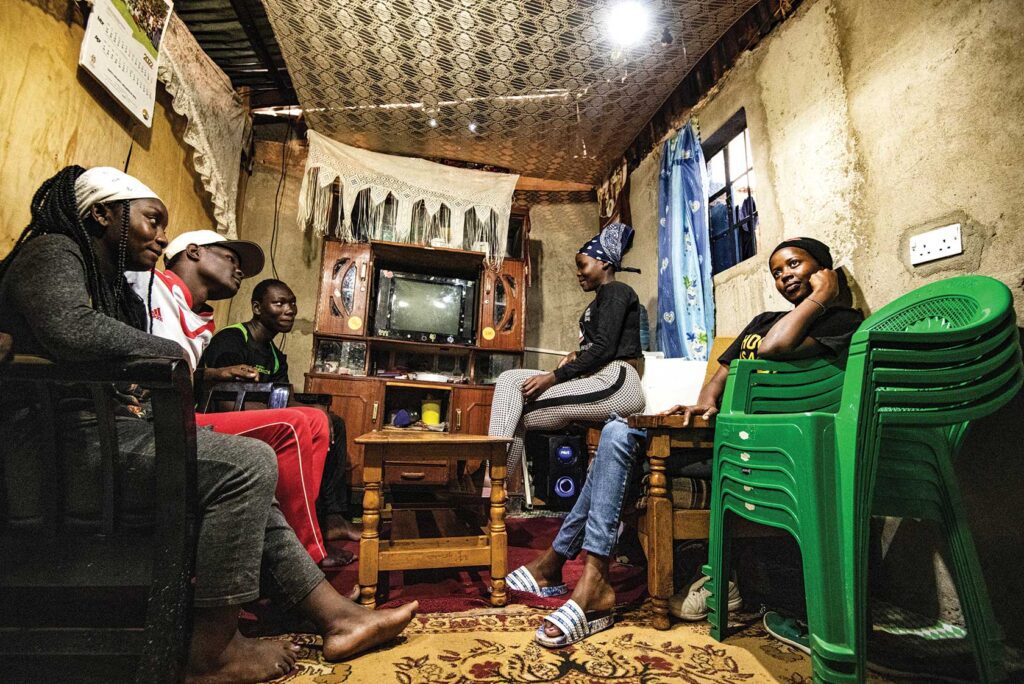‘Dialogues, Diasporas, and Detours Through Africa’ at the Fitchburg Art Museum

There is a sizable collection of African art in Johnny Appleseed country, or north central Massachusetts. The Fitchburg Art Museum has a collection of over 1,200 pieces of African art, according to Lauren Szumita, a former curator at the museum. Seven Black artists recently had unlimited access to the collection, thanks to an inaugural year-long residency, and they created work both inspired by and reacting to these items.
Their works are now part of a new exhibition titled “Dialogues, Diasporas, and Detours Through Africa,” curated by artist-curator Dell Marie Hamilton and on view through Jan. 14, 2024.
The year-long Black Artist Residency is a partnership between the Fitchburg Art Museum (FAM) and the Black artist collective Where Are All The Black People At? (WAATBPA), the brainchild of photographer Archy LaSalle. Jean Borgatti, a consulting curator for African art, assisted participating artists Lou Jones, Sharon Dunn, George Annan, bashexo, Reginald Jackson, Digi Chivetta and LaSalle as they explored FAM’s collection to find objects that would inform their own work.
Items that served as inspiration include tribal masks, an Asante ceremonial sword, a Malian lute and Yoruba divination trays. The contemporary art ranges in media from photography featuring farmers and dance classes in Mozambique to digital art inspired by a mummified Egyptian child.
Jones, a photographer who captured images in Mozambique and Kenya during the residency, says, “Africa is more than pestilence, poverty, conflict and animals. I want to show Africa as it is right now.”
Hamilton worked with the artists during the year-long residency. She says working with the collective was challenging, as curators typically choose the artists for a show, while this show came with seven preselected ones. It worked out, though. Over Zoom, Hamilton says, “This is my superpower. In every circumstance, I’m bringing these disparate things to make something cohesive.” Dialogues, diasporas and detours all are themes that emerged at the beginning of the residency and solidified over the year.
Working with FAM, Hamilton says, was a wonderful experience. “They had my back at every step of the process, and I think that was crucial to the success of the show and me being able to execute my vision for the project,” she says.
Szumita, who worked with Hamilton on the show, says she likes the show’s mix of early and mid-career artists. “I always love it when there’s a mix of experiences,” she says. “I think that it strengthens everybody in different ways. It helps bring up the younger ones to be around people that have been around the block. I think the energy and ideas from the emerging artists helps push the comfort levels of the more established ones.”
LaSalle says he got the idea for WAATBPA around 2015, after raising concerns about his Black photography students not having as many future opportunities as his white students to exhibit their work, given the dearth of Black photographers showing in museums. He echoes Szumita as he describes his relationship with Annan, an emerging photographer. “I learned a lot of things from George, and George learned a lot of things from me,” he says. “They call it mentoring, but I call it a collaboration.”
Hamilton says, “African American art and African art is diverse and dynamic. There isn’t one way to look at Black art or be a Black artist and curator. There’s lots of complexity and dynamism that’s happening right here in Massachusetts. And if you want to bring something beautiful into the world, you have to work collectively.”
To hear more from curator Dell Marie Hamilton and participating artists, attend an upcoming talk at FAM on Saturday, Dec. 2 at 1:30 p.m.









